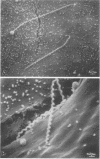Abstract
Interactions of Leptospira interrogans with cultured endothelial and kidney epithelial cells were assayed by examining (i) cytoadherence of intrinsically radiolabeled leptospires to eucaryotic cell monolayers and (ii) penetration of leptospires through cell monolayers grown on polycarbonate filters in chemotaxis chambers. L. interrogans serovars attached to cultured cells in a dose- and time-dependent manner. Adherence was diminished following pretreatment of organisms with proteases, rabbit immune serum, or heat. When observed by scanning electron microscopy, most leptospires attached by both ends, rather than just one tip like Treponema pallidum. In penetration assays, 9.7% of added L. interrogans migrated through the monolayer-filter barrier, while only 0.3% of L. biflexa penetrated in the same time interval. Transmission electron microscopy revealed that organisms entered the host cell cytoplasm. These in vitro results indicate that leptospires have an invasive capacity that may be related to pathogenicity in vivo and suggest that further investigation of interactions with host cells may enhance knowledge of leptospiral virulence.
Full text
PDF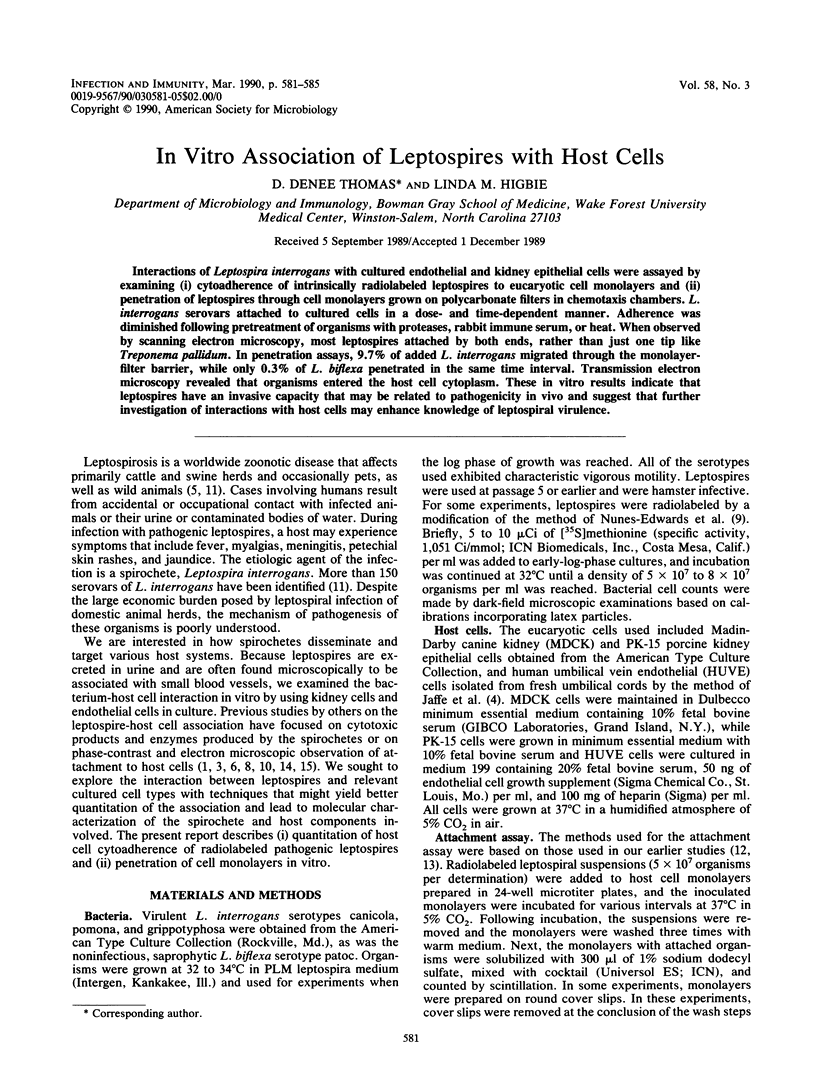
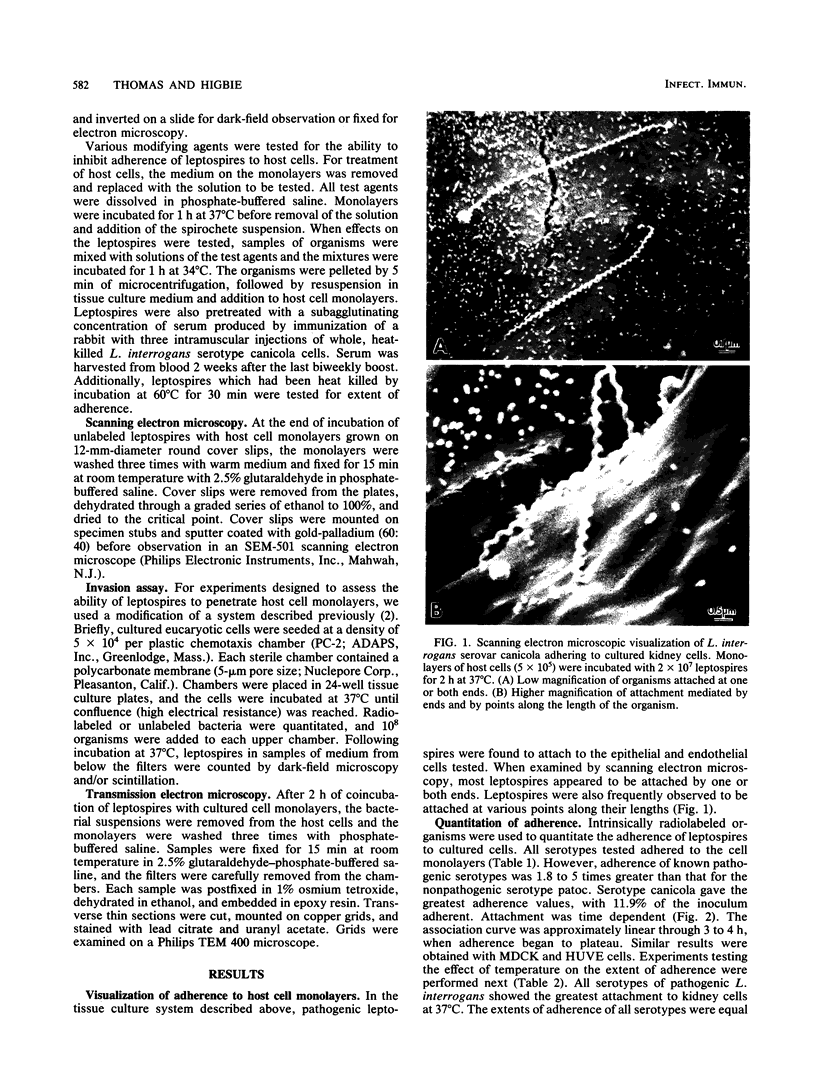
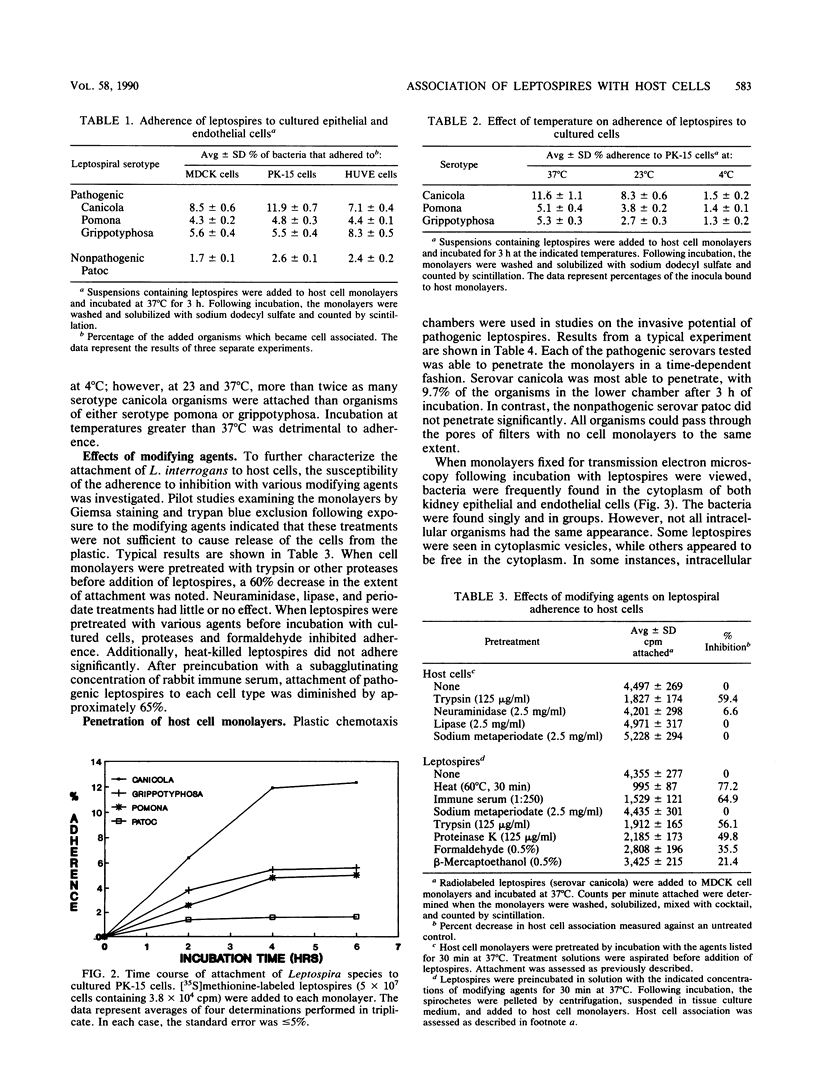
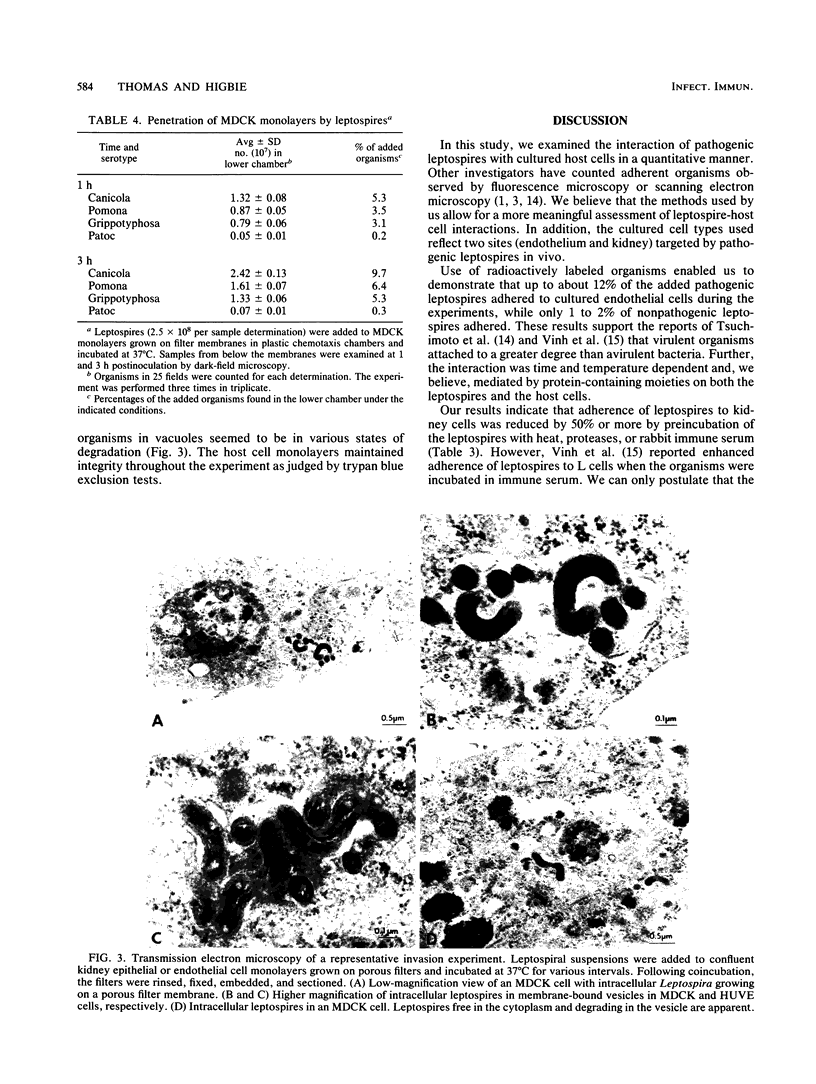
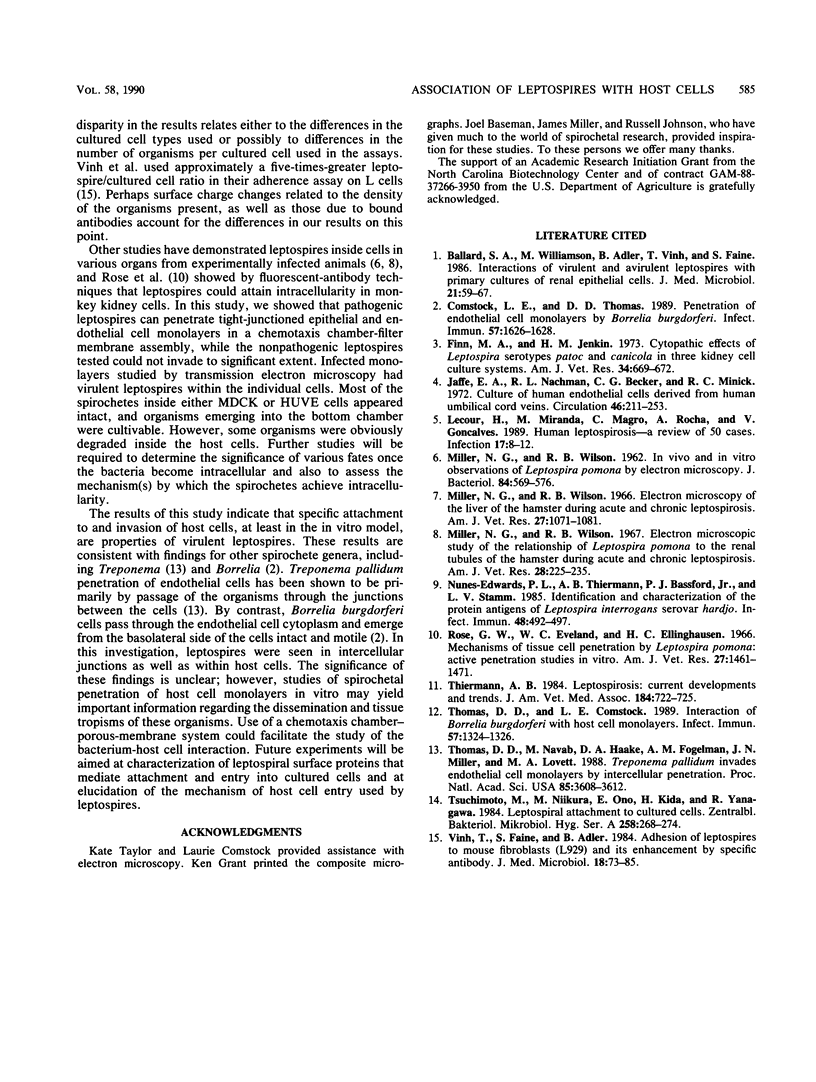
Images in this article
Selected References
These references are in PubMed. This may not be the complete list of references from this article.
- Ballard S. A., Williamson M., Adler B., Vinh T., Faine S. Interactions of virulent and avirulent leptospires with primary cultures of renal epithelial cells. J Med Microbiol. 1986 Feb;21(1):59–67. doi: 10.1099/00222615-21-1-59. [DOI] [PubMed] [Google Scholar]
- Comstock L. E., Thomas D. D. Penetration of endothelial cell monolayers by Borrelia burgdorferi. Infect Immun. 1989 May;57(5):1626–1628. doi: 10.1128/iai.57.5.1626-1628.1989. [DOI] [PMC free article] [PubMed] [Google Scholar]
- Finn M. A., Jenkin H. M. Cytopathic effects of Leptospira serotypes patoc and canicola in three kidney cell culture systems. Am J Vet Res. 1973 May;34(5):669–672. [PubMed] [Google Scholar]
- Lecour H., Miranda M., Magro C., Rocha A., Gonçalves V. Human leptospirosis--a review of 50 cases. Infection. 1989 Jan-Feb;17(1):8–12. doi: 10.1007/BF01643489. [DOI] [PubMed] [Google Scholar]
- Miller N. G., Wilson R. B. Electron microscopy of the liver of the hamster during acute and chronic leptospirosis. Am J Vet Res. 1966 Jul;27(119):1071–1081. [PubMed] [Google Scholar]
- Miller N. G., Wilson R. B. IN VIVO AND IN VITRO OBSERVATIONS OF LEPTOSPIRA POMONA BY ELECTRON MICROSCOPY. J Bacteriol. 1962 Sep;84(3):569–576. doi: 10.1128/jb.84.3.569-576.1962. [DOI] [PMC free article] [PubMed] [Google Scholar]
- Nunes-Edwards P. L., Thiermann A. B., Bassford P. J., Jr, Stamm L. V. Identification and characterization of the protein antigens of Leptospira interrogans serovar hardjo. Infect Immun. 1985 May;48(2):492–497. doi: 10.1128/iai.48.2.492-497.1985. [DOI] [PMC free article] [PubMed] [Google Scholar]
- Thiermann A. B. Leptospirosis: current developments and trends. J Am Vet Med Assoc. 1984 Mar 15;184(6):722–725. [PubMed] [Google Scholar]
- Thomas D. D., Comstock L. E. Interaction of Lyme disease spirochetes with cultured eucaryotic cells. Infect Immun. 1989 Apr;57(4):1324–1326. doi: 10.1128/iai.57.4.1324-1326.1989. [DOI] [PMC free article] [PubMed] [Google Scholar]
- Thomas D. D., Navab M., Haake D. A., Fogelman A. M., Miller J. N., Lovett M. A. Treponema pallidum invades intercellular junctions of endothelial cell monolayers. Proc Natl Acad Sci U S A. 1988 May;85(10):3608–3612. doi: 10.1073/pnas.85.10.3608. [DOI] [PMC free article] [PubMed] [Google Scholar]
- Tsuchimoto M., Niikura M., Ono E., Kida H., Yanagawa R. Leptospiral attachment to cultured cells. Zentralbl Bakteriol Mikrobiol Hyg A. 1984 Dec;258(2-3):268–274. doi: 10.1016/s0176-6724(84)80044-9. [DOI] [PubMed] [Google Scholar]
- Vinh T., Faine S., Adler B. Adhesion of leptospires to mouse fibroblasts (L929) and its enhancement by specific antibody. J Med Microbiol. 1984 Aug;18(1):73–85. doi: 10.1099/00222615-18-1-73. [DOI] [PubMed] [Google Scholar]



